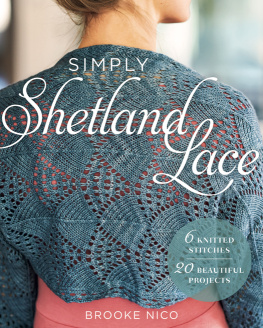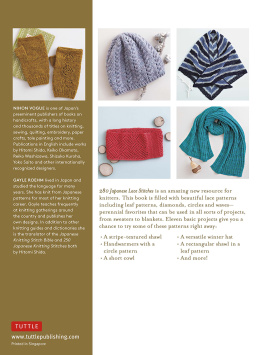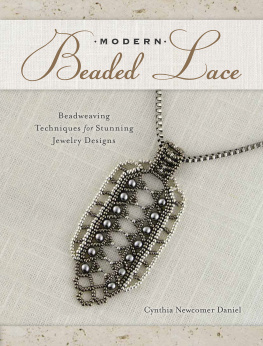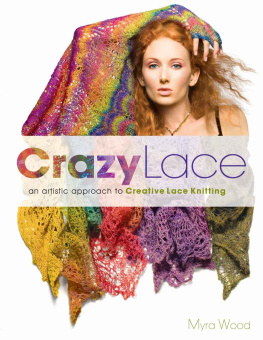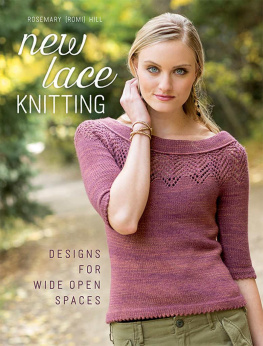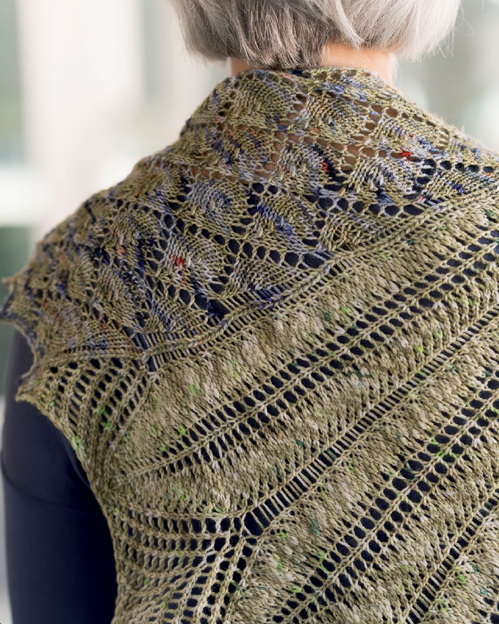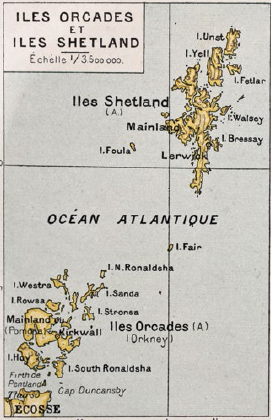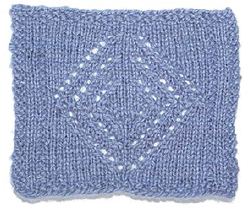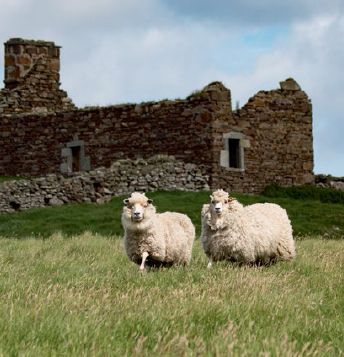LARK CRAFTS and the distinctive Lark Crafts logo are registered trademarks of Sterling Publishing Co., Inc.
Cover and photography 2018 Sterling Publishing Co., Inc.
All rights reserved. No part of this publication may be reproduced, stored in a retrieval system, or transmitted in any form or by any means (including electronic, mechanical, photocopying, recording, or otherwise) without prior written permission from the publisher.
For information about custom editions, special sales, and premium and corporate purchases, please contact Sterling Special Sales at 800-805-5489 or .
The Shetland Islands: A UNIQUE HISTORY
The Shetland Islands are a Scottish archipelago consisting of one hundred individual islandsonly fifteen of which are inhabited. The islands lie northeast of Great Britain, at a longitude that is as far north as St. Petersburg, Russia. Located just below the Arctic Circle, the Shetland Islands form part of the division between the Atlantic Ocean and the North Sea. The landscape is varied, with rolling hills, craggy cliffs, and miles of beach. Because Shetland is so far north, summer days are long, with up to nineteen hours of sun. Conversely, the winters boast Scandinavian white nights, with less than six hours of daylight. The climate can be harsh, with high winds and gales of rain and sleet in the winter.
The Shetland Islands are closer to Norway than mainland Scotland and were in fact ruled by Norway until 1469, when James III of Scotland married Margaret, daughter of Christian I of Denmark. Christian I did not have enough cash for a dowry, so he pawned his interests in the Shetland and Orkney Islands to provide for his daughters marriage settlement. Although the islands did not return to Norse rule, one can see the lasting influence of Norse traditions throughout Shetlands culture, from language to architecture to names.
Fishing has traditionally been the mainstay of the Shetland economy, and it was Shetlands fishing industry that indirectly led to the worlds fascination with the beautiful lace patterns created by Shetland knitters. In the early 1800s, it was common for young boys to work preparing fish for trade. Arthur Anderson was one such boy. Anderson later enlisted in the Royal Navy, where the Shetland nautical tradition was highly prized, and then began a career in the shipping industry, eventually becoming chairman of the largest fleet of commercial steamships in the world. In the late 1830s, Anderson, a champion of Shetland knitwear, presented Queen Victoria with some hand-knit Shetland lace stockings and shawls. The queen was thrilled and commissioned twelve additional pairs of lace stockings, fueling an interest in Shetland lace, which spread around the world and continues to this day.
GUNNISTER MAN
Reproduction of the lace pattern found on garments of Gunnister Man
In 1951, the remains of a man were found in a peat bog in Gunnister, Shetland. While very little of the mans body survived, his clothing was remarkably well preserved. Archaeologists concluded that the man lived in the late seventeenth or early eighteenth century, but his identity and the circumstances of his death remain a mystery. Gunnister Man, as he was dubbed, gave historians much insight into the clothing of his era. Among the items found were several knitted pieces, including a knitted purse (one of the earliest surviving examples of stranded knitting), knitted stockings, and a small lace knit undergarment. Gunnister Man was no fool: lacework in fine wool is surprisingly warm, as the holes form air pockets for insulation.
Shetland Sheep
The ancestors of the breed of sheep now called Shetland were probably first brought to the islands by Viking settlers. Shetland sheep belong to the Northern European Short-Tailed family of sheep and are known for their hardiness, essential given the harsh climate and agriculture of the islands.
The Shetland breed is one of the smallest of the British sheep, with animals that tend to be calm and docile. A typical fleece weighs between 2 and 4 pounds (0.9 to 1.8kg), with a staple length of 2 to 5 inches (5 to 13cm). Traditionally, Shetland sheep did not have a uniform coat from head to tail: the finest and crimpiest wool was found at the neck, the shoulder wool had a bit less crimp, while the midsection and hind wool was coarser. Hence, the neck wool was used for lace shawls and stockings, the shoulder wool for baby garments, and the midsection for outerwear.
SHETLAND SHEEP IN AMERICA
Although Shetland sheep have been around for hundreds of years, only recently have they become a presence in the United States. Several early attempts to bring the Shetland breed to America were unsuccessful. (One notorious example: a Shetland ram owned by U.S. president Thomas Jefferson. The ram, along with some forty other sheep, was kept on Presidents Square in front of the White House. Sadly, this particular ram was unusually aggressive and attacked several people, even killing a small boy. After being moved to Monticello, the abominable animal, as Jefferson called him, was eventually sent to his demise after attacking several other sheep in the flock.) Most Shetland sheep in the United States today are descended from G. D. Dailleys flock of thirty-two sheep brought to Ontario, Canada, in 1980. (Thankfully, these Shetlands have a gentler temperament than Jeffersons ram.) Six years after Dailleys flock arrived, several Shetland sheep arrived in the United States. Today the breed is growing in popularity among American shepherds and farmers due to the animals docile personality and beautiful wool.
Shetland Lace: A MYSTERY STEEPED IN TRADITION
The history of Shetland lace, like so much knitting history, is unfortunately largely unknown. Some say that the art was brought to Shetland from Spanish traders, while others believe that it began on the islands. What we do know, however, is that lace-knitting traditions developed throughout the world and often spread from country to country via shipping routes. In the Iberian Peninsula, a knitter used silk and cotton for her lace, while knitters in northern climates used wool. Silk and cotton do not decompose as easily as wool, and so archeologists have found earlier surviving examples of lace knitting from Spain than from Scotland. (The earliest examples of Spanish lace date from the thirteenth and fourteenth centuries, while the earliest extant northern lace is from the late seventeenth century.) Because lace worked in silk and cotton survived longer than lace knit in wool doesnt necessarily mean southern knitters developed the art of lace knitting first.

